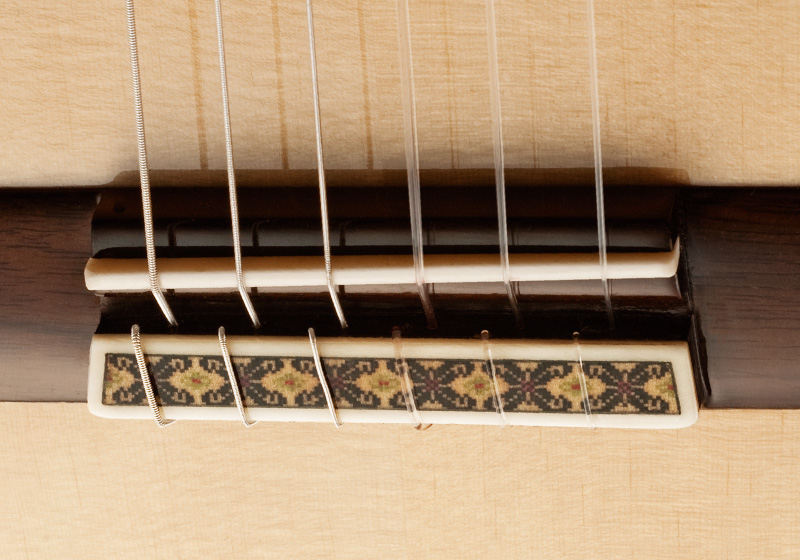What is a 12-hole tie block good for?
On high-quality classical guitars you can find 12-hole tie blocks. How do they differ from 6-hole tie blocks? Here’s the answer.
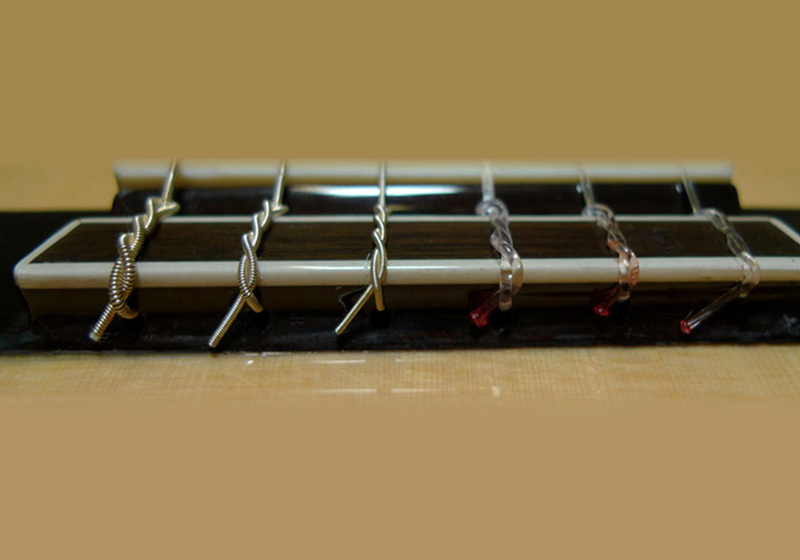
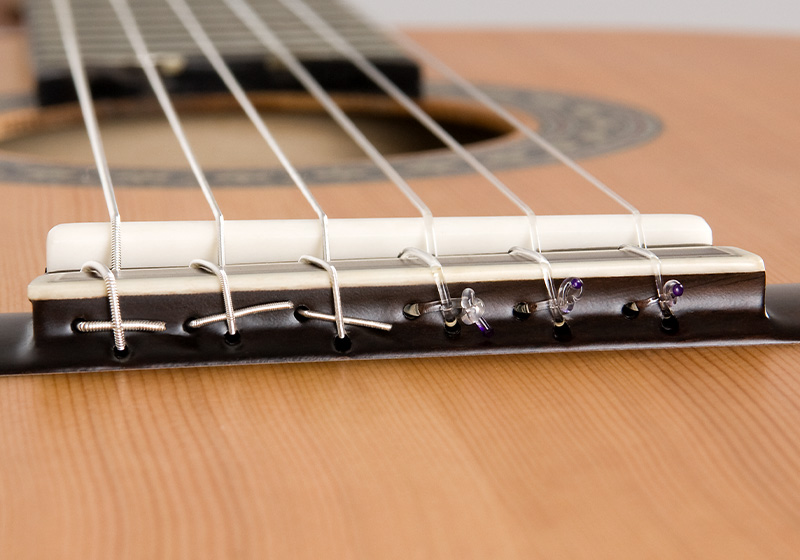
What is the difference between 6-hole tie blocks and 12-hole tie blocks?
On any classical guitar, the string makes a bend back down close to the bridge at the bridge inlay. In front of the bridge inlay it vibrates, and behind the bridge inlay it is guided to a small hole for attachment. With the conventional knot method, in which each string is fastened only with the help of a single hole, the break angle (in our illustration: A) at the bridge inlay is reduced due to a string loop (in our illustration: B), which inevitably arises with the traditional fastening method.
This loop is omitted with bridges with 12-hole tie block, because the string is fastened here with a different knot method. The advantage here is that the string angle in the bridge is not changed by the knot and is therefore always the same. The break angle (in our illustration: C) at the bridge inlay is steeper. The string exerts more pressure on the bridge inlay. Thus, the vibration of the strings is transmitted more through the bridge to the top. Short and simple: The 12-hole tie block causes a better sound of the guitar.
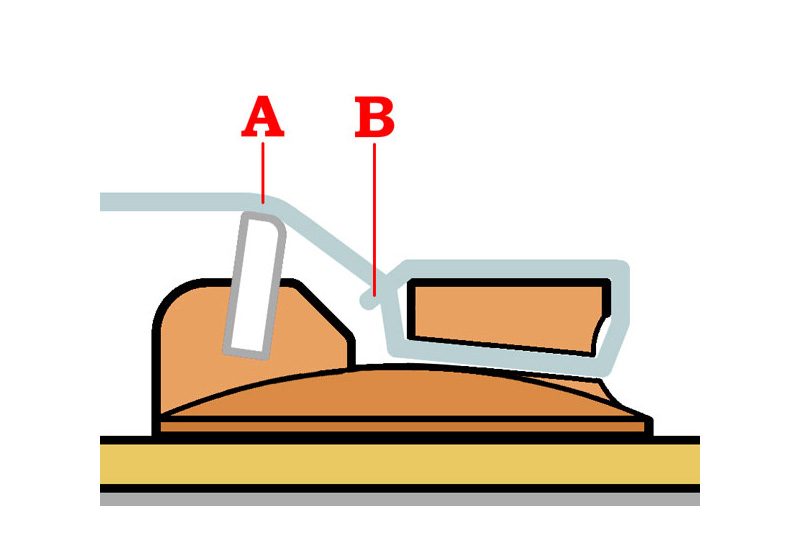
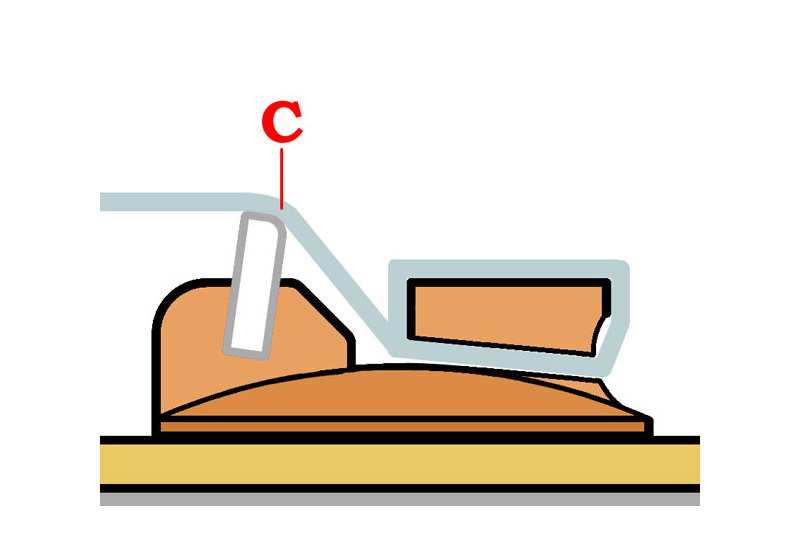
Another advantage is that there is more downward leeway for adjusting the action. Conventional bridges with a 6-hole tie block stop at a certain point: the bridge inlay cannot be ground down any lower. On bridges with a 12-hole tie block, the bridge inlay can be ground down further if the action is to be set lower. It only has to protrude from the wood, but the break angle above the bridge inlay is always guaranteed.
Because it is more costly to manufacture a bridge with a 12-hole tie block, this specification is usually found only on higher-end guitars.
At Artesano, models in all the Nuevo, Sonata, Flamenco, Maestro and Estudiante X series feature the advantageous 12-hole tie block close to the bridge.
